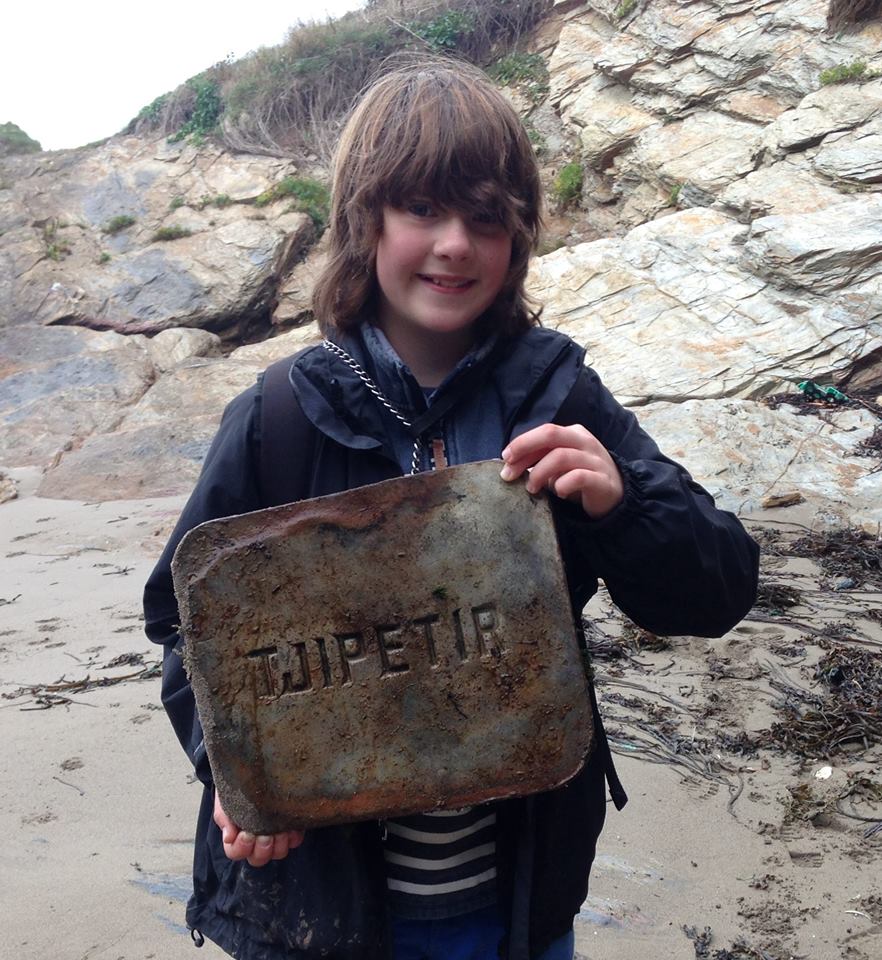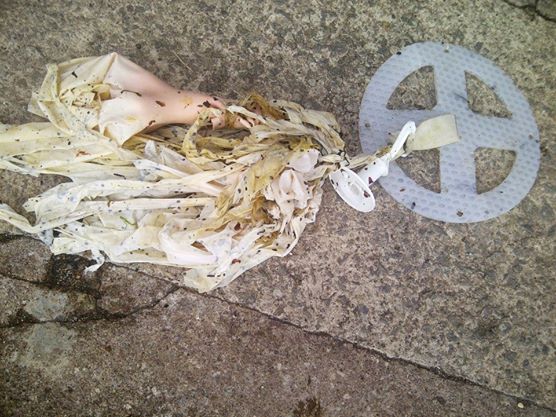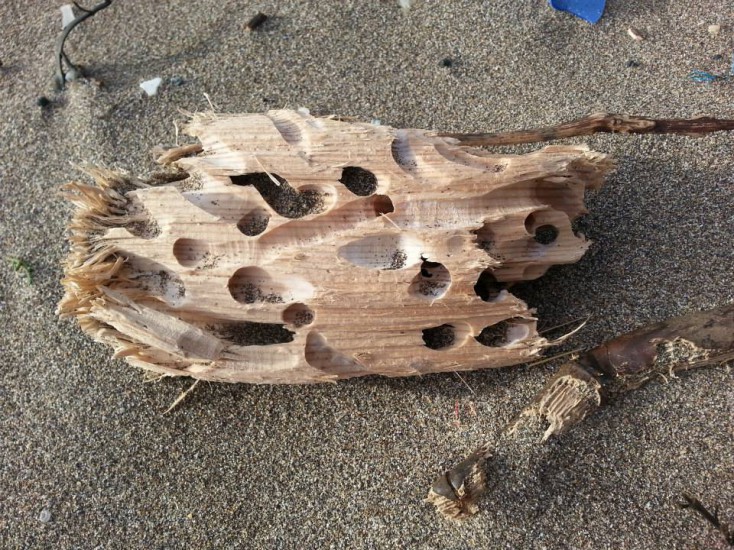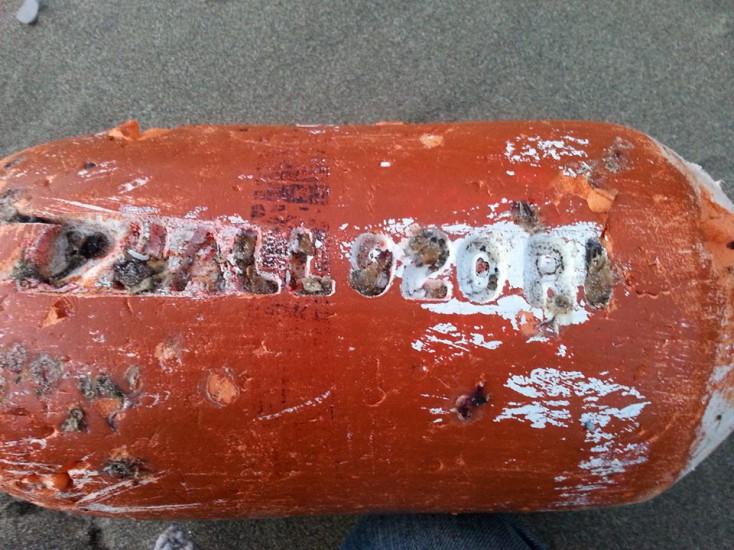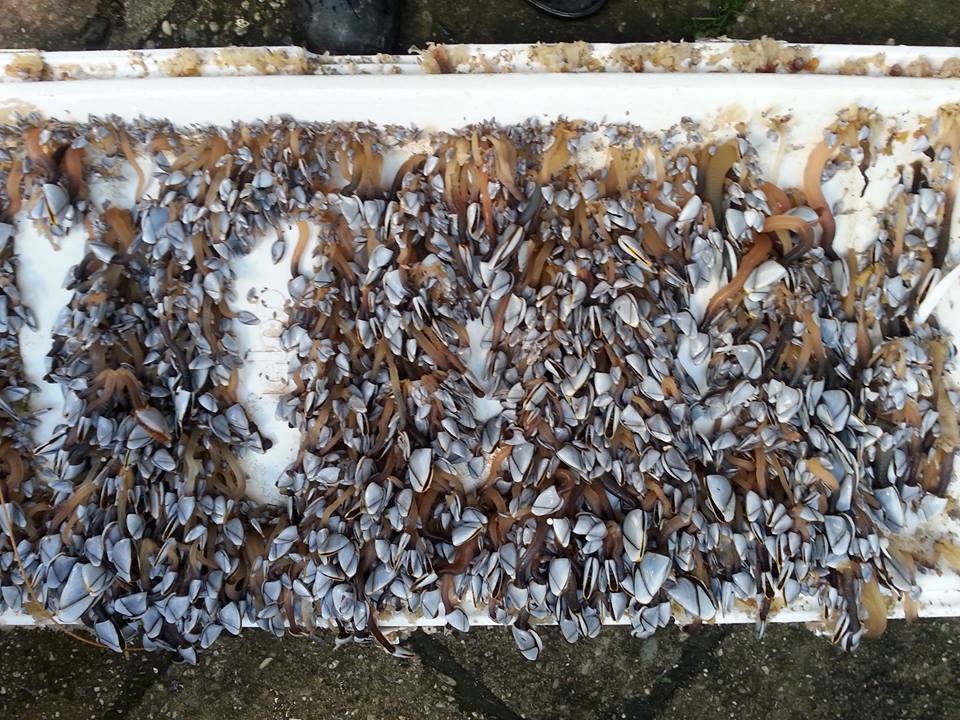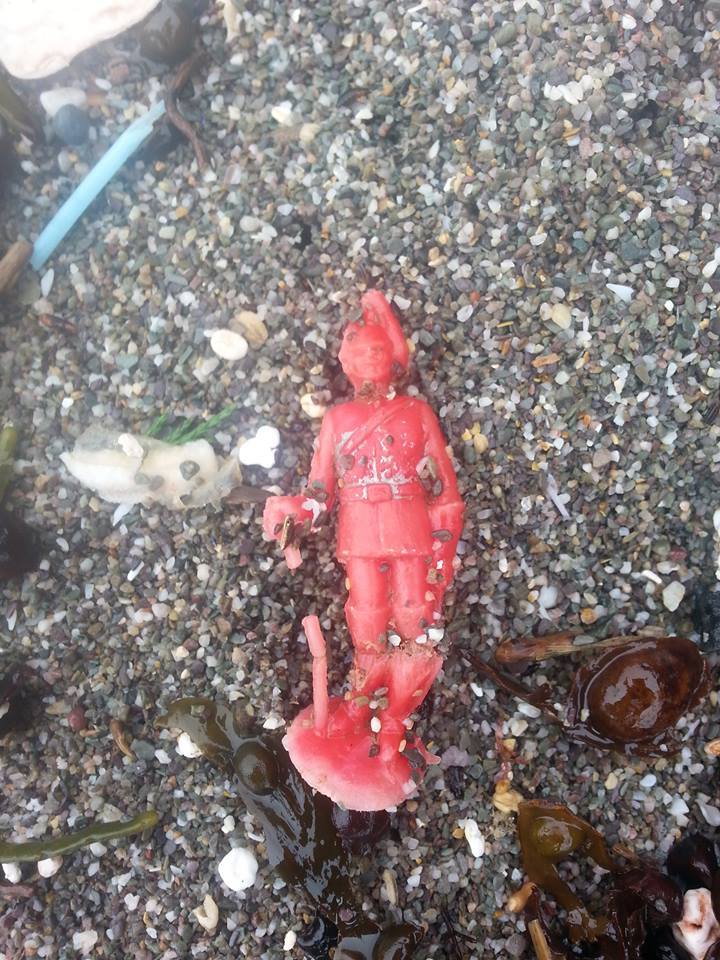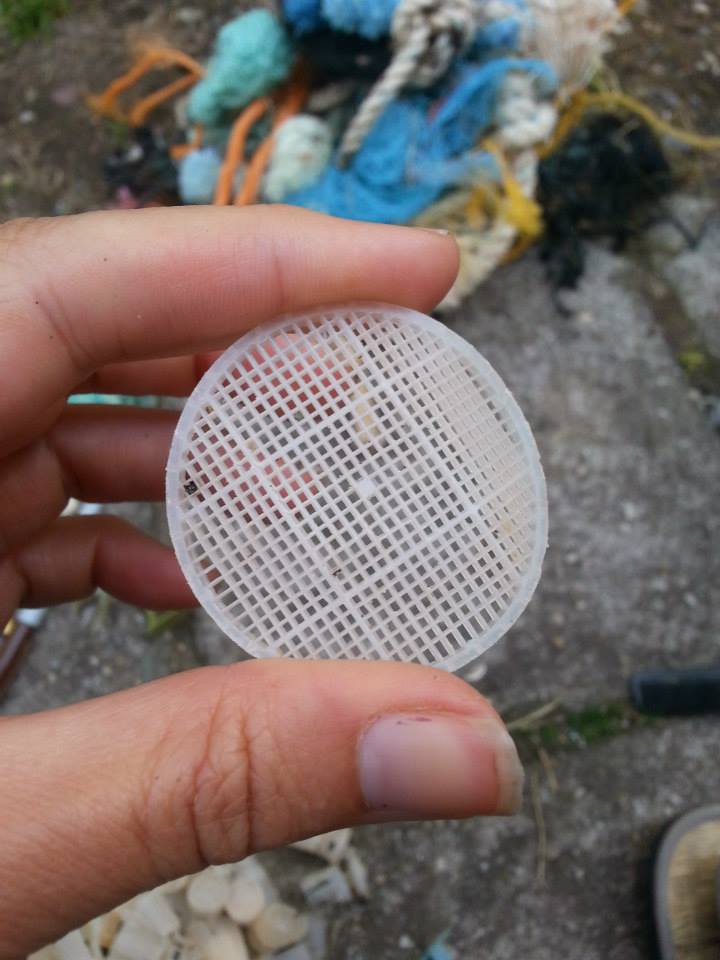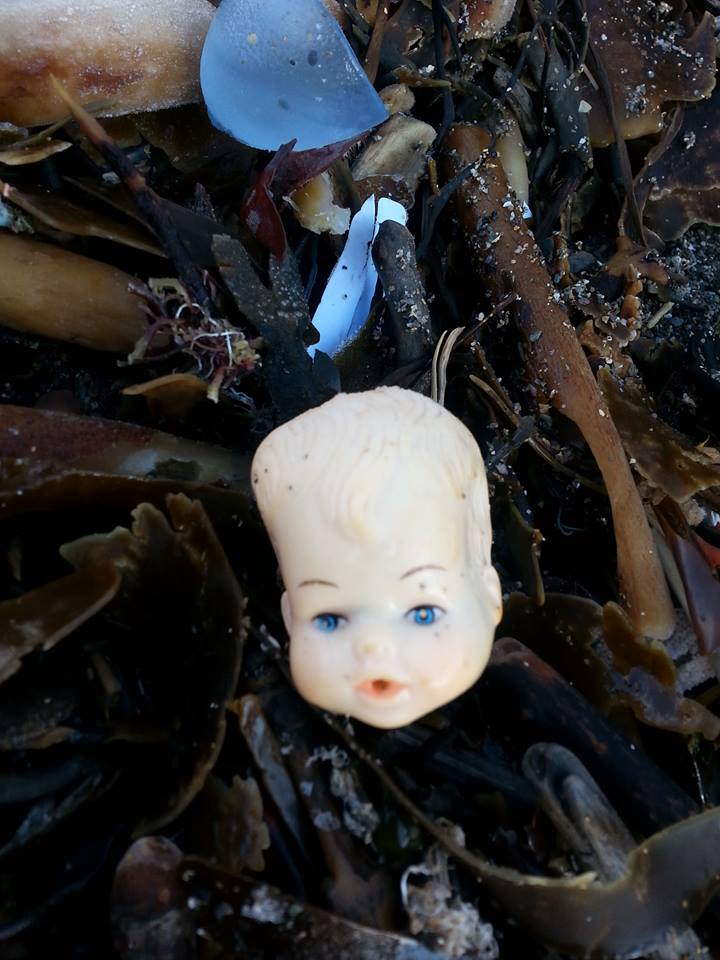Interesting finds
Beach cleaning isn’t all about collecting a load of horrible old rubbish.
Part of the joy of it is also finding unusual and strange items, many of which have been in the sea for a long time or travelled from far away. Many of these finds have interesting stories to tell… and can also help to teach us more about how plastic moves in the sea and the currents that bring it to our shores.
Sea beans
Not everything that washes up on the beach is plastic. We sometimes find ‘sea beans’, the seed pods of exotic plants from the Caribbean and Latin America, which float to our shores from across the Atlantic. These are easily identifiable evidence of how international items can and do reach Cornwall. How much of the less-identifiable rubbish that we pick up will also have come from across the pond?
Lobster tags and buoys
Other clearly-identifiable trans-Atlantic travellers include lobster and crab trap tags from Canada and the United States, where each trap must carry details of the fishing zone, date of issue, etc. We often find tags from Newfoundland, Labrador, Massachussets, Connecticut and Maine.
Lobster pot marker buoys also turn up. We managed to track one of them back to a boat from Rhode Island.
Plastic sewage discs
In March 2011, heavy rains and melting snow overwhelmed the discharge systems of the Hooksett Wastewater Treatment Plant in New Hampshire, United States, causing millions of small plastic filter discs (normally used to aid sewage digestion) to spill into the Merrimack River, from where they flowed out to sea. We find these from time to time on Whitsand Bay.
Lego
In 1997 a container ship called the Tokio Express was on its way from Holland to the United States when it was hit by a freak wave about 20 miles off Land’s End, causing 62 containers to spill into the sea.
One of these containers held almost five million pieces of Lego – ironically enough pieces designed to be included in sea-themed kits.
Today we still find pieces of this Lego very regularly on Whitsand Bay, mostly pieces of Lego seaweed, divers’ flippers, scuba tanks and life preservers, and spear guns. However, the most highly-prized finds are Lego dragons and octopuses, of which only a few have ever been recorded. For Lego hunters there is even a Facebook page where you can find out about latest finds and record yours!
While collecting Lego provides some light amusement, it does also illustrate the longevity of plastic in the sea. After almost two decades at the mercy of the oceans, most of the pieces we pick up look as if they could have popped out of the packet just yesterday.
Other container spill debris
Many other items we find can also be traced back to container ship spills, and tracking them and how quickly they move can provide useful information about local currents. Two items that were found a lot in 2015 were HP printer cartridges - apparently spilled from a container lost in the Atlantic in 2014 - and pink Vanish detergent bottles. At one point the waves around Poldhu cove in Cornwall appeared pink with the amount of bottles washing in.
Historical dumped rubbish – forgotten but not gone
Whitsand Bay was used as a dump site for solid waste from Devonport Dockyard until the 1970s. A lot of the waste we pick up, especially in the eastern part of the bay (Polhawn) dates from that era, such as fan belts, engine filters, etc.
Dunes and rocks reveal their secrets
During storms, boulders can be tossed around like pebbles and huge amounts of sand can be shifted on our beaches (Whitsand Bay lost around one metre of sand for many months following the Spring 2014 storms).
This action can release items that have lain buried or trapped under rocks for years, so there can be a big increase in the number of ‘vintage’ plastic items washing up after storms.
Shipwreck rubber
The most idiosyncratic examples are solid blocks of gutta percha stamped TJIPETIR, the name of a plantation in Indonesia, at least two of which have been found in Whitsand Bay.
We have also found many sheets and bales of rubber, stamped with the names of other plantations in Malaysia, such as SENAWANG and CHUEN YAN.
These are thought to have been cargo on a ship that wrecked around a century ago. With the wreck breaking open, the rubber has been released and washed up on our beaches.
Interestingly the rubber, a biodegradable natural material, has hardly degraded at all in the sea, highlighting the fact that so-called ‘biodegradable’ plastics (such as balloons) do not break down in the marine environment in the same way that they do on land.
There is a dedicated Tjipetir Mystery Facebook page where you can track all the latest finds.
Many items have interesting stories to tell… and can teach us more about the currents that bring marine litter to our beaches

